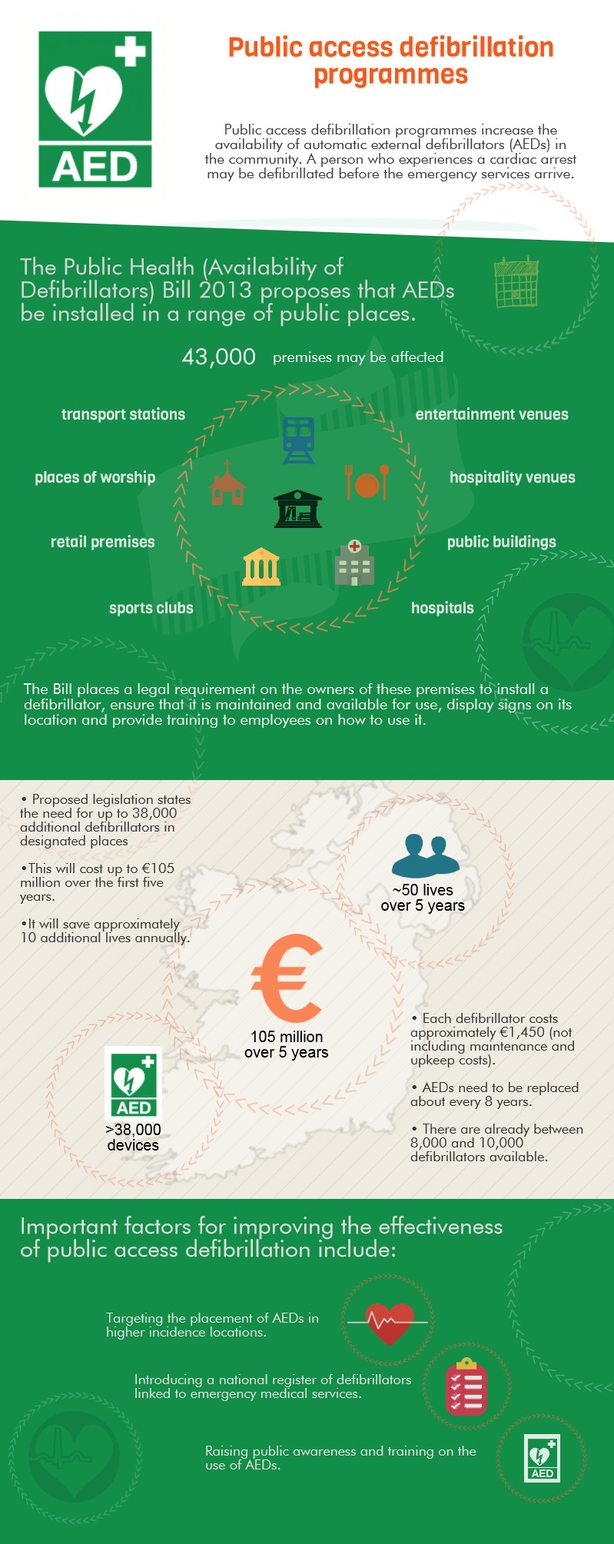A report from the Health Information and Quality Authority has recommended the targeted placing of public access defibrillators in locations where there is a higher incidence of out-of-hospital cardiac arrest.
In a health technology assessment for Minister for Health Leo Varadkar, HIQA said that none of the current public access defibrillation programmes that it assessed would be considered cost-effective.
It said that depending on the number of building types included, this type of programme would involve the provision of between 2,000 and 38,000 extra defibrillators.
HIQA said it would save between two and ten additional lives a year, at a total cost of between €5.3m and €105m over the first five years.
The authority was asked to undertake the assessment to assist with decisions on the Public Health (Availability of Defibrillators) Bill 2013.
The Bill proposed the mandatory provision of static automated external defibrillators (AEDs) in a list of designated places around the country.
These venues would be required to install and maintain a defibrillator, as well as train staff in their use.
Each defibrillator costs €1,450, not including maintenance and upkeep costs.
HIQA said between 8,000 and 10,000 defibrillators are available today in Ireland, including at many of the high incidence locations where cardiac incidences are most likely to happen.
The authority also recommended introducing a national register of defibrillators linked to emergency medical services, as well as raising public awareness and training on the use of AEDs.
It said this could render public access defibrillation programmes more cost-effective.


